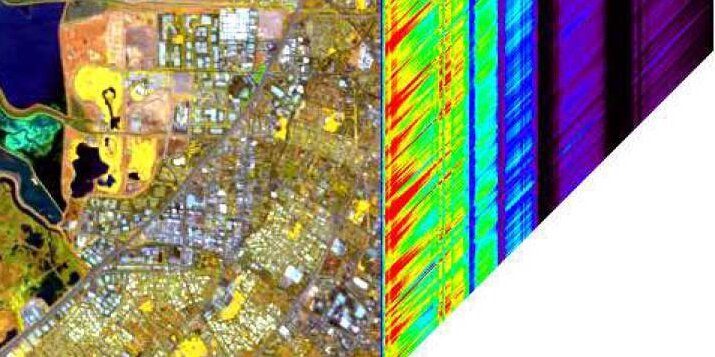Geometry in the mix: geometric methods for non-linear spectral unmixing (GEOMIX)
Summary
In remote sensing applications, hyperspectral imagery captures the reflectance spectra of the different materials that are present on the surface, with a high spectral resolution in a large wavelength range spanning visible and infrared light. Spectral mixing plays an important role in these airborne and spaceborne sensors, as the field of view of each pixel is relatively large. The spectrum in each pixel is a mixture of all components inside, and often even outside, the field of view. Spectral unmixing aims to decompose each pixel again into its constituent spectra, their abundances, and possible additional details such as geometrical or atmospheric information.
Several popular unmixing strategies exist, based on linear or bilinear models, and radiative transfer approaches. These techniques suffer from several drawbacks, and are typically incapable of dealing with higher-order optical interactions, atmospheric interference, or geometrical issues such as lighting received from objects in adjacent pixels or shadowing. Furthermore, most approaches assume that a single pure spectrum exists for each spectral component, unable to accommodate for naturally occurring spectral variability between specimens of the same class. In this project, we will tackle several of these problems, leading to an unmixing methodology with capabilities that greatly surpass existing methods.
The resulting unmixing framework will be extensively tested on simulated and real data sets. Simulations will be model-based, and generated with computer graphics methods such as ray tracing. Real hyperspectral data sets with extensive ground truth information are available, and will be employed to assess the algorithm’s capabilities in detecting and dealing with these subtle spectral effects. Our partner in this project, with whom we have already co-authored several papers, is highly specialized in such data sets, will co-develop these algorithms, and will also provide us with Martian data from the CRISM sensor.
General info: BELSPO (Belgian Science Policy Office) Research Programme for earth observation, STEREO III Contract nr NR SR/06/357 |
Partners: UA - Vision Lab (P. Scheunders) University of Massachusetts, Amherst, USA (M. Parente) |
Period: 01/2018 - 06/2020 |
